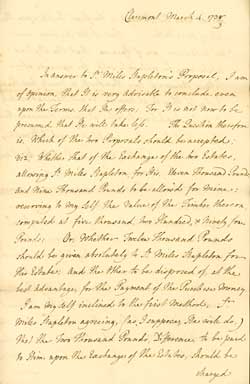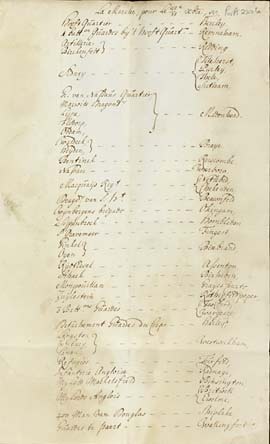Historical Year and the Civil Year
The 1st of January was not always recognised as marking the start of the year. In fact, until 1751, the civil (and ecclesiastical and legal) year was considered in England and Wales to begin on Lady Day, the 25th of March. This can create ambiguity, because for dates between the 1st of January and the 25th of March the historical year does not match the civil year. 1752 was the first year in England and Wales, in which the civil or legal year began on 1st January. In Scotland, however, the New Year was celebrated on 1st January in 1600 for the first time, creating a discrepancy between the nations of Great Britain during the period 1600-1751.
To give an example of how this worked in practice, here is a example showing how the dates worked in England in the years 1748 and 1749:
30 December 1748
31 December 1748
1 January 1748
2 January 1748
...
23 March 1748
24 March 1748
25 March 1749
Another example is that of a tombstone in Salisbury Cathedral, which commemorates a baby boy who was born on 13th May 1683 and died on 19th February of the same year. This makes no sense unless you know that the civil year ran from March to March.
Thus, for example, a document dated the 25th of January 1748 (civil year) was actually written on what we would consider the 25th of January 1749 (historical year). The new historical year had begun but the civil year continued until the 25th of March. In order to address this ambiguity, researchers are advised to refer to the date as the 25th January 1748/9. Indeed, many contemporaries actually did the same thing, as in this example of a letter from Thomas Pelham-Holles, 4th Duke of Newcastle upon Tyne [later 1st Duke of Newcastle under Lyne]. The correct date according to the historical year is the latter of the two figures.

Letter from the 4th Duke of Newcastle upon Tyne, 1739 (Ne 6 D 16/1/518) with detail below

Researchers will also come across the use of the terms 'Old Style' (O.S.) and 'New Style' (N.S.) dates. They help to clarify the ambiguities of dates falling between 1st January and 24th March. 'Old Style' means that the document is dated according to the civil year and so the date must be adjusted in order to put the document into the correct historical sequence.
The civil year explains why the twelfth month of our year is called December, when the first syllable of the word so obviously means 'ten', or the tenth month is October when the first syllable really means 'eight'. With the civil year beginning on 25 March, March was actually the first month, making April the second, May the third, June the fourth, July the fifth, August the sixth, September the seventh, October the eighth and so on. Thus users who come across dates containing a number or Roman numeral in place of the month should pay particular attention.
Take this example of a list relating to orders for the march of the Dutch army. The list is dated '23/13 Xbre [16]88'. This is NOT the 23/13 of October 1688 as might be expected, but is actually the 23/13 of December of that year.

Orders for the march of the Dutch army, 1688 (Pw A 2226) with detail below

Next page: Law Terms